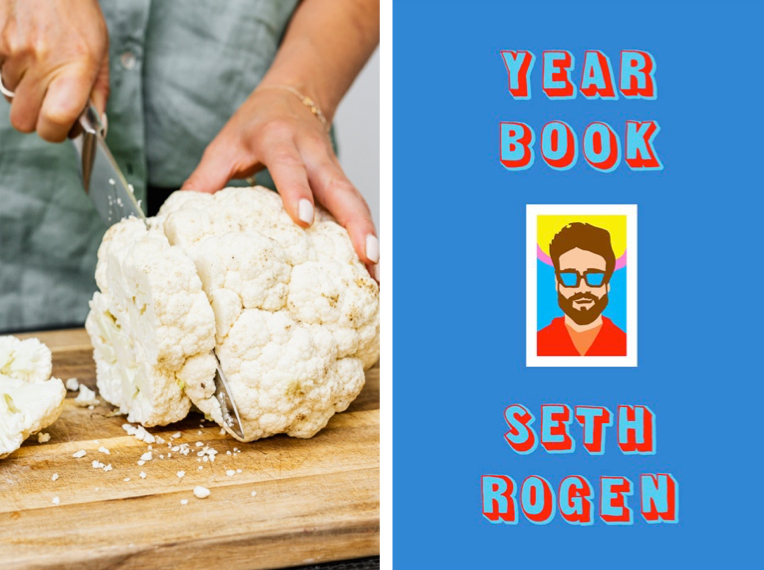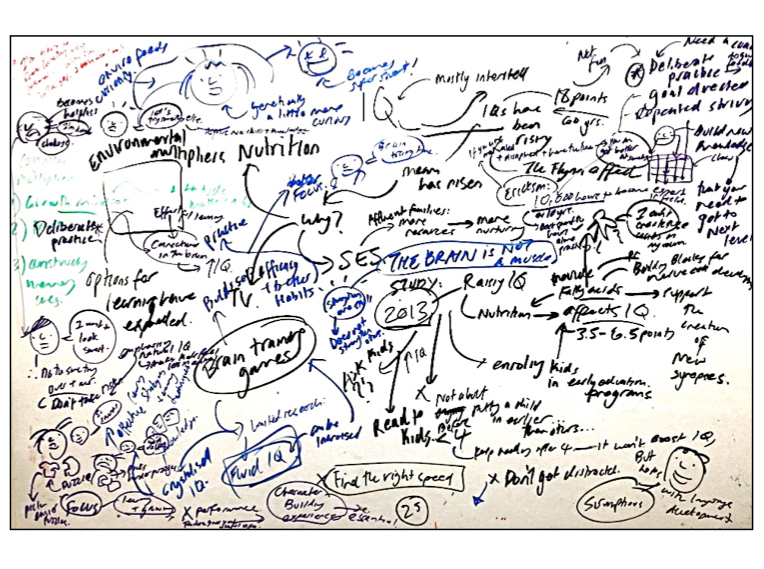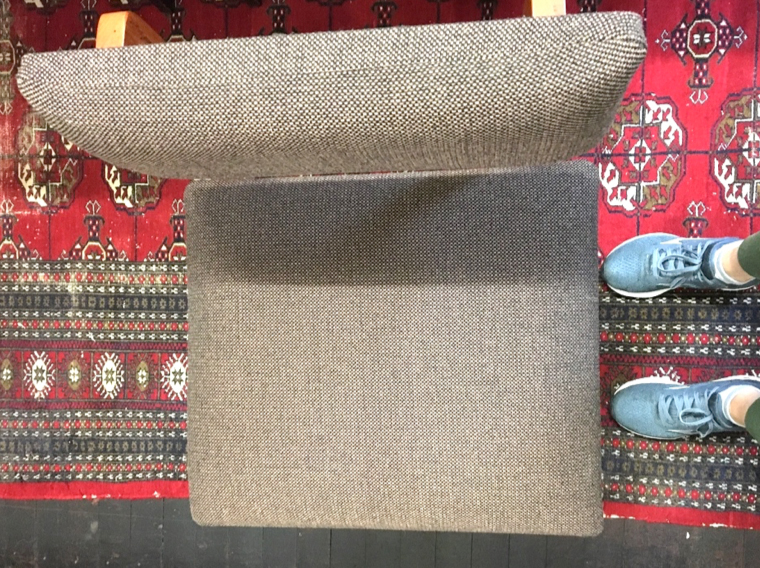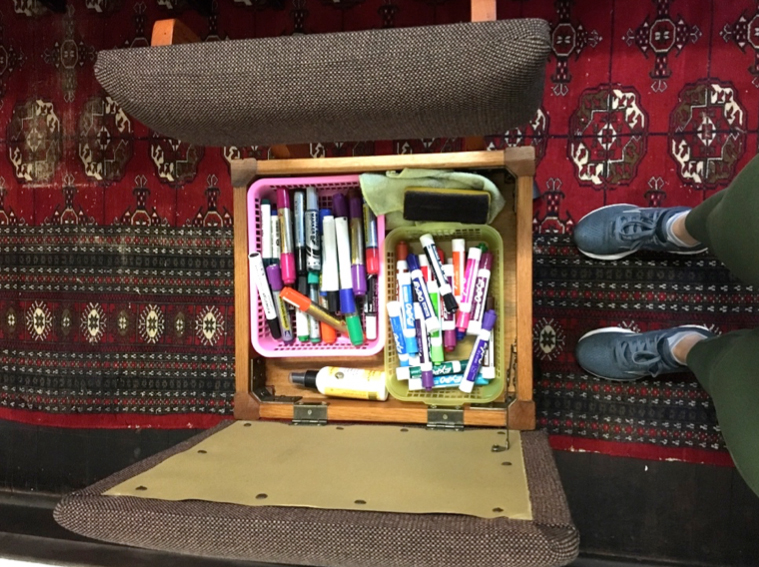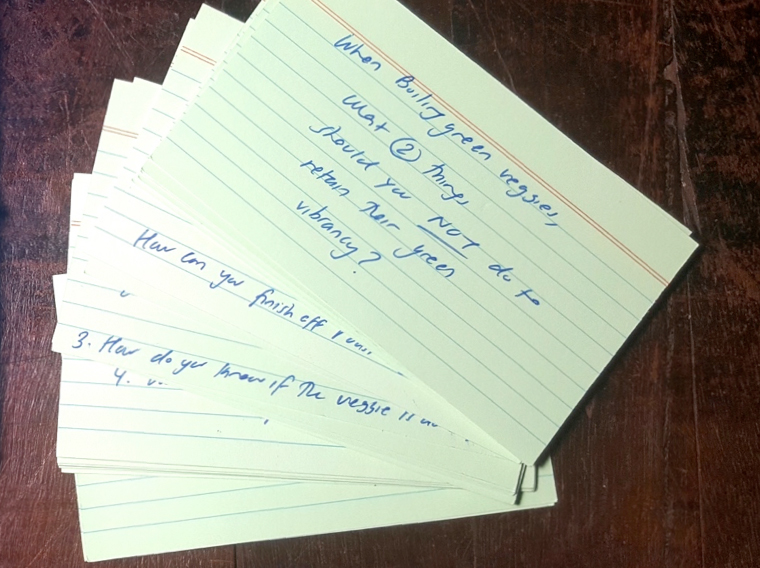Do you struggle to remember the content of audiobooks?
You have a sense of the general gist of it. You can say, “It was interesting”. But that’s about it.
It doesn’t have to be like this. With the help of some effective learning strategies, you can retain a lot more information when you listen to audiobooks.
In this article, I’ll share with you a simple process to capture and retain key ideas from audiobooks and podcasts.
Why bother to remember what you listen to?
I realise you can clip/bookmark key parts of audiobooks and go back and listen to those parts over and over again. So what’s the point of taking the time to remember what you listen to?
Contrary to popular belief, the point of learning isn’t to do well on your tests and exams. Here’s how I view things . . .
There are two main reasons why I’m learning new stuff constantly:
1) I want to grow as a person; and
2) I want to be able to apply what I learn out in the world.
I want to use the information in books and research papers to improve my life and other people’s lives in some way. As Derek Sivers says:
“Learning without doing is wasted. If I don’t use what I learn, then it was pointless! How horrible to waste those hundreds of hours I spent learning, and not turn it into action.”
If I want to use the strategies and key ideas in books and articles, I have to be able to hold them in my long-term memory so I can pull those ideas out of my brain whenever I need them.
Memorising information also allows you to be super creative. It allows you to innovate. As memory champion Dr Boris Konrad says in his online memory training course Superbrain!:
“What you look up you can’t remember. What you can’t remember, you can’t understand and you cannot have ideas about. . . you need memory to have ideas and to innovate.”
In a nutshell, that’s why I want to remember what I listen to.
My process of remembering the content of audiobooks
To try my simple method, you’ll need the following items:
• An audiobook or podcast
• Headphones or a speaker
• A whiteboard or a large sheet of paper
• A box of coloured markers
• Comfortable shoes
• Index cards
• A chair (optional)
Here’s my method, broken down into steps:
1. Assess what level of focus the book requires
Not all audiobooks require the same level of focus. Some books you can listen to while you drive or exercise at the gym. Whereas others require you to down tools and give the audiobook your full attention.
Before you get started, it’s always a good idea to listen to a sample of the audiobook to assess its complexity and what you want to get out of it.
For instance, I recently listened to Seth Rogen’s laugh out loud audiobook Year Book. It was so much fun to listen to. My intention with this audiobook was just to enjoy it and have a good laugh. I could easily listen to it as I cooked dinner.
But there was no way I could do this with the audiobook Make It Stick: The Science of Successful Learning. This audiobook is packed full of research studies and useful information for my work. When I hit the play button, I had to stop chopping vegetables and give the audiobook my full attention.
2. Break it down
Before I start listening, I break the audiobook down with some simple maths. I figure I can handle 20 minutes of listening a day. So if it’s a 6 hour audiobook (360 minutes), I divide 360 by 20. This equals 18 days. I think “18 days? That’s doable”.
Doing this simple calculation is really important. It’s the antidote to overwhelm and procrastination.
I used to feel overwhelmed when I’d look at the time it would take to listen to a new audiobook. I felt nervous to hit the play button. But this rarely happens after I’ve crunched the numbers and broken the book down into manageable chunks.
Knowing I only need to listen to 10 or 20 minutes a day feels achievable. I know that I can do it.
3. Don’t just sit there and passively listen: Get up and move!
I find sitting and listening for long periods of time quite boring. It doesn’t do it for me. This is why when I hit play on an audiobook that requires my full focus, I put on my comfy gym shoes and I go to my whiteboard. As I listen, I draw and write out the information on my feet.
If my brain starts to get bored or distracted (and yes, this happens all the time!), I switch things up a bit to keep it fresh for my brain. For instance, I change the colour of my pen or I move from standing to sitting on my special chair. Let me tell you about this chair . . .
This is one of my favourite pieces of furniture. I recently purchased it for $7 from a secondhand store. It has a compartment where I store my whiteboard markers.
But what I love most about it are the wheels on each leg. This allows me to glide easily from side to side as I work on my whiteboard, which is actually lots of fun.
4. Stop before you exhaust yourself
Once I’ve reached my mental limit or there’s no space left for me to write or draw on the whiteboard, I stop. I’m done. I step away from the whiteboard, clap my hands and I go do something else.
5. Revisit the ideas and circle the good ones
Later in the day (usually after I’ve had my dinner), I’ll revisit the whiteboard. The whiteboard is conveniently fixed to my dining room wall, so as I eat I might glance over at the ideas.
Not everything I’ve scribbled down is important and/or worth remembering though. That stuff I wipe off. But what about the important ideas I want to remember? I draw big circles around them.
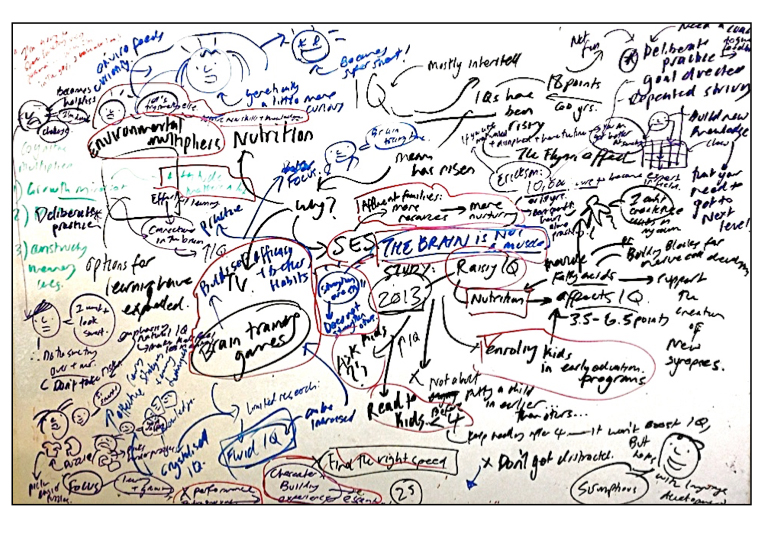
6. Transfer the golden ideas onto index cards
Next I grab some index cards and scribble out those ideas onto the cards. I write a question on one side and the information on the back. What I’m doing is creating a deck of flashcards that I’ll later test myself with.
Before I go to bed, I wipe the whiteboard clean so I’m ready to go for the next day’s worth of audiobook listening and learning.
7. Test myself with my flashcards
With my flashcards, I use two highly effective study strategies to remember the ideas on them:
1) Active recall; and
2) Spaced practice.
Here’s how I combine these two learning strategies . . .
After a day or two, I test myself with these flashcards. I either take them for a walk and test myself or I’ll grab a sheet of paper and try to recall as much of that information as possible before looking at those cards. And then I repeat this process a week later. And then a month later.
In the book Make it Stick, the author explains that every time we do active recall, it’s like we’re vaccinating ourselves against forgetting that information. When I test myself with my flashcards, it’s like I’m giving my memory a booster shot for that specific content.
It’s always a bit of a mental strain doing active recall. It certainly doesn’t feel as nice as highlighting. But highlighting doesn’t help you to retain information. And ultimately, I want to do what’s effective and helps me to learn better.
8. Bonus extra: Mind map out your flashcards
If you really want to deeply embed the information into your brain, create a mind map on the key ideas from the audiobook once you’ve finished listening to it. This way you’ll be able to see how all the ideas are connected.
To sum up
I’ve found this process works a treat when it comes to remembering the content of audiobooks. It’s deeply satisfying to be able to remember what you listen to. And it’s even more satisfying when you can apply that knowledge in your everyday life. Give the process a shot and let me know how you go.


